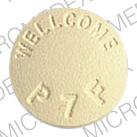Mepron Disease Interactions
There are 2 disease interactions with Mepron (atovaquone).
Atovaquone (applies to Mepron) gastrointestinal absorption
Moderate Potential Hazard, High plausibility. Applicable conditions: Anorexia/Feeding Problems, Malabsorption Syndrome, Diarrhea
Oral bioavailability of atovaquone is limited under fasting conditions, but is increased approximately two-fold when administered with food. Patients with gastrointestinal disorders or eating difficulties may be more likely to have impaired absorption and, consequently, subtherapeutic levels of the drug. Alternative parenteral treatment should be considered for patients unable to achieve adequate plasma concentrations of atovaquone with oral administration.
Atovaquone (applies to Mepron) liver disease
Moderate Potential Hazard, Moderate plausibility.
Atovaquone may cause elevated liver function tests. In clinical trials, elevated serum alkaline phosphatase concentrations (> 2.5 times the upper limit of normal, or ULN) were reported in approximately 8% of patients, and elevations in serum ALT and AST (> 5 times ULN) were reported in 6% and 4% of patients, respectively. Increases in serum bilirubin has occurred rarely. Atovaquone also may undergo limited metabolism by the liver. Therapy with atovaquone should be administered cautiously in patients with severe hepatic impairment. Liver function tests should be performed periodically, and therapy withdrawn if significant elevations develop.
Switch to professional interaction data
Mepron drug interactions
There are 93 drug interactions with Mepron (atovaquone).
Mepron alcohol/food interactions
There is 1 alcohol/food interaction with Mepron (atovaquone).
More about Mepron (atovaquone)
- Mepron consumer information
- Check interactions
- Compare alternatives
- Pricing & coupons
- Reviews (4)
- Drug images
- Latest FDA alerts (2)
- Side effects
- Dosage information
- During pregnancy
- Generic availability
- Drug class: miscellaneous antibiotics
- Breastfeeding
- En español
Related treatment guides
Drug Interaction Classification
| Highly clinically significant. Avoid combinations; the risk of the interaction outweighs the benefit. | |
| Moderately clinically significant. Usually avoid combinations; use it only under special circumstances. | |
| Minimally clinically significant. Minimize risk; assess risk and consider an alternative drug, take steps to circumvent the interaction risk and/or institute a monitoring plan. | |
| No interaction information available. |
See also:
Further information
Always consult your healthcare provider to ensure the information displayed on this page applies to your personal circumstances.


